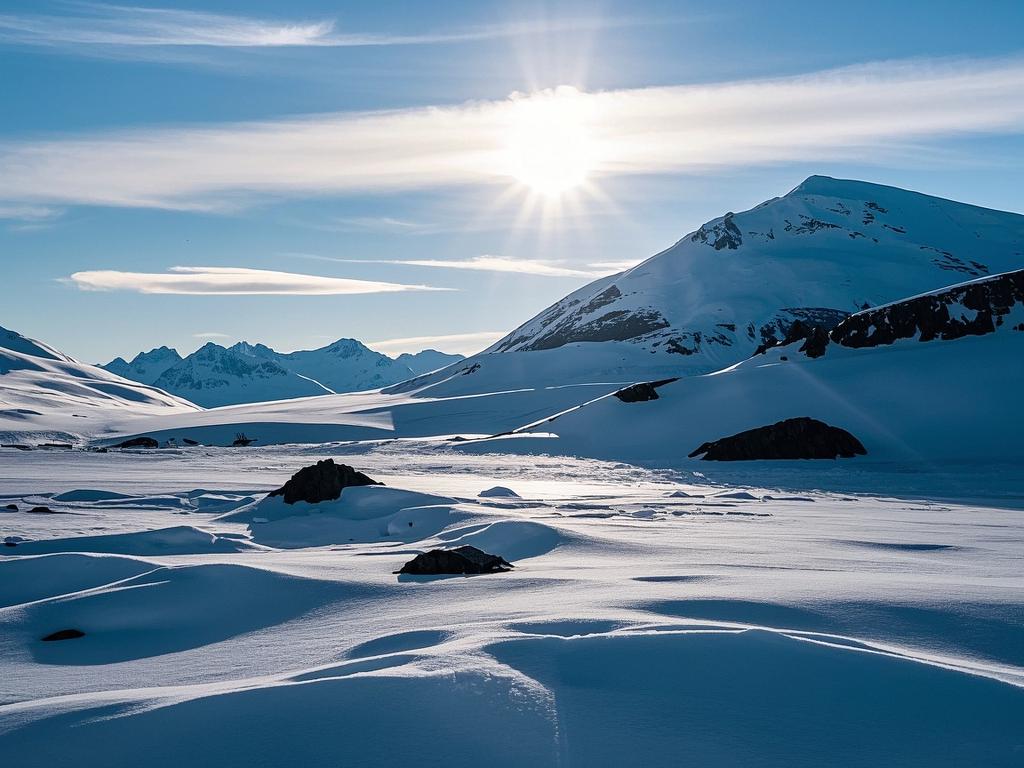
# The Arctic Tundra of Alaska: A Cold Wilderness on the Brink
Hey there, fellow nature enthusiasts! Today, I want to take you on a journey to one of the most unique and fragile ecosystems on our planet - the Arctic tundra of Alaska. This vast, cold wilderness is teetering on the brink, and it's time we pay attention.
The Arctic tundra of Alaska is a land like no other. Picture a landscape where the ground is permanently frozen, except for a thin layer on the surface that thaws during the short summer months. It's a place where temperatures can drop to bone-chilling lows, and the wind howls across the barren expanse. This harsh environment is home to a variety of fascinating plants and animals that have adapted to survive in these extreme conditions.
One of the most iconic residents of the Arctic tundra is the polar bear. These majestic creatures are perfectly adapted to the cold, with their thick fur and layer of blubber to keep them warm. However, due to climate change, the polar bear's habitat is shrinking at an alarming rate. Sea ice, which is crucial for their survival, is melting earlier and forming later each year. This means that polar bears have less time to hunt for food, and their populations are declining rapidly. In fact, it's estimated that there are only around 22,000 polar bears left in the world, and that number is expected to drop by as much as 30% in the next 35 years.
But it's not just the polar bears that are at risk. The Arctic tundra is also home to a wide variety of other wildlife, including caribou, musk oxen, arctic foxes, and numerous species of birds. Many of these animals rely on the tundra's unique ecosystem for food, shelter, and breeding grounds. As the climate warms, these habitats are being disrupted, and the animals are struggling to adapt.
Take the caribou, for example. These large herds of migratory animals rely on the seasonal changes in the tundra to find food and water. They travel thousands of miles each year in search of the best grazing areas. However, as the snow melts earlier and the vegetation patterns change, the caribou are having a harder time finding the resources they need. This is leading to a decline in their populations, which in turn has a ripple effect on the entire ecosystem.
The Arctic tundra is not only important for wildlife but also for the global climate. It acts as a carbon sink, storing large amounts of carbon dioxide in the permafrost. However, as the permafrost thaws due to rising temperatures, it releases this carbon dioxide back into the atmosphere, contributing to further climate change. This is a classic example of a feedback loop, where the effects of climate change are accelerating the very process that is causing it.
So, what can we do to save the Arctic tundra of Alaska? Well, the first step is to recognize the problem and take action. We need to reduce our greenhouse gas emissions by transitioning to renewable energy sources such as solar, wind, and hydro power. This will help to slow down the rate of climate change and give the ecosystems in the Arctic a chance to adapt.
We also need to protect the tundra's unique habitats and wildlife. This means implementing strict conservation measures, such as creating national parks and wildlife reserves, and regulating human activities in these areas. We need to ensure that the land is managed sustainably, so that future generations can enjoy the beauty and wonder of the Arctic tundra.
In addition, we need to raise awareness about the importance of the Arctic tundra and the threats it faces. By educating people about the unique ecosystems and the role they play in the global climate, we can inspire them to take action and make a difference. Whether it's reducing our energy consumption, supporting conservation efforts, or simply spreading the word, every little bit helps.
The Arctic tundra of Alaska is a precious and fragile ecosystem that is on the brink of collapse. We have a responsibility to protect it for future generations. By taking action now, we can ensure that this cold wilderness continues to thrive and that the unique plants and animals that call it home are able to survive. So, let's all do our part and be the change we want to see in the world. Together, we can save the Arctic tundra of Alaska!
Now, I want to hear from you. What do you think we can do to protect the Arctic tundra? Leave your comments below and let's start a conversation!
And if you want to learn more about the Arctic tundra and the amazing creatures that live there, be sure to check out some of the resources I've listed below. There are some really cool documentaries and websites that can give you an in-depth look at this fascinating ecosystem.
So, until next time, keep exploring, keep learning, and keep fighting for our planet!
Resources: - National Geographic's Arctic Tundra page: https://www.nationalgeographic.com/environment/habitats/arctic-tundra/ - World Wildlife Fund's Arctic Program: https://www.worldwildlife.org/regions/arctic - Documentary: "Chasing Ice" - https://www.chasingice.com/
以上是一篇关于阿拉斯加北极苔原的英文推文,包含了对其生态环境、面临的威胁以及应对措施的讨论,希望能满足你的需求。你可以根据实际情况进行调整和修改。

